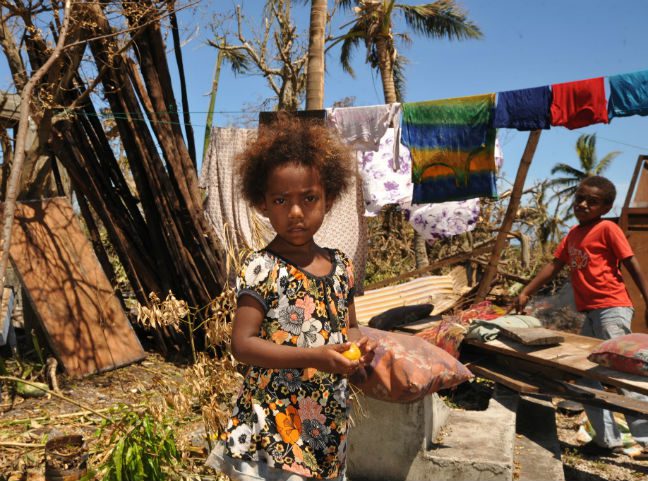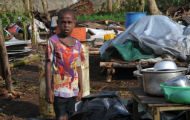
“It was riveting, extremely frightening…Buildings were vibrating. Roofs were being ripped off. The noise was spectacular, the rumbling, the growling, it was like nothing I have ever heard.”
That’s Oxfam’s Country Director in Vanuatu, Colin Collett van Rooyen, describing Tropical Cyclone Pam as she ripped through Vanuatu on Friday last week.
By some measures, Cyclone Pam was the most powerful cyclone ever recorded in the South Pacific.
It will almost certainly turn out to be the most devastating.
Local solutions
In Vanuatu, three out of four people rely on farming and fishing to feed their families. Cyclone Pam has destroyed their crops and homes and left hunger, homelessness and the risk of disease in its wake.
It may be some time yet before the full scope of the impact across Vanuatu is understood.
Over the next weeks, it will be crucial for us all to do what we can to support the government and people of Vanuatu to identity solutions, including on food and shelter, and to rebuild.
Resilient Ni-Vanuatu
Just last year, Shirley Laban, manager of our climate change program in Vanuatu, was in Australia talking about the impacts of climate change in the Pacific.
Shirley proudly described the groundbreaking work of NGOs, communities, and the Vanuatu Government towards building the resilience of Ni-Vanuatu communities in the face of climate change.
Communities and aid agencies have been working together across Vanuatu’s many islands: trialling new food crops, sharing lessons, strengthening Vanuatu’s voice on the international stage, all the time drawing on the unique strengths, character and resilience that the Ni-Vanuatu have become rightly known for.
But who can ever be prepared for one of the most destructive storms we’ve seen?
Urgent call to action
The ferocity and damage of Pam is climate change in action.
We know that climate change is increasing the destructive impacts from tropical cyclones. Scientists say it is likely that both the wind speed and rainfall from cyclones will increase. At the same time, rising seas are compounding the risks for coastal communities.
Cyclones are powered by the warmth of the ocean surface. At the time of Cyclone Pam, the ocean surface temperature was one to two degrees above normal, and at least some of this warming is down to human influence on the climate.
Cyclone Pam is a tragic reminder that least developed countries – who have contributed almost nothing to the problem of climate change – are suffering the devastating consequences of global inaction.
Just last year, while in Australia, Shirley said “Vanuatu is paying a heavy price for the failure of rich countries to confront the reality of climate change.”
The price paid by the people of Vanuatu increased sharply last week. We must stand with them.
You can help provide clean water to families affected by Cyclone Pam. Please give generously.
